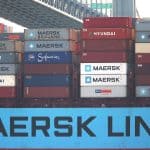
Managing equipment in a complex and highly active environment like a warehouse or a public road is a big enough challenge on its own. Safety is priority one every day at your site, and worker devices (whether embedded or mobile) exist in support of that directive. Only the appropriate content and applications should be accessible at all times, or you could be exposed to exceptional liability—we frequently hear from our logistics customers that device misuse while operating equipment was one of their biggest fears. But ensuring that every piece of technology with a touchscreen is a fully managed object at the infrastructure level is an immense undertaking to begin on your own.
There’s no one-size-fits-all solution in your industry. No one has the “easy fix.” A single pane of glass is ideal, but getting there is not so simple. Maybe you’ve caught yourself explaining this up or across, and it’s easy to see where the conversation goes next: “Can we build it?” And in most cases, no satisfying answer really emerges, because building is itself an immensely uncertain and complex process. Forecasting your costs and resourcing, let alone a timeline to a workable solution, is folly. All you know is that it will be harder, take longer and not work as well as you’d hoped.
What happens when you introduce a new hardware target? When existing equipment reaches software end of life (EOL)? Or your tooling falls out of security or other industry compliance? Instead of focusing on delivering innovation in a reliable, scalable way, you end up being the maintenance engineer for your own infrastructure, fighting the device management war on two fronts.
Warehousing handhelds, forklift controls, industrial information displays, digital safety signage, rugged tablets and other hardware present a complex heterogeneous deployment, one that no organization was prepared to manage ten years ago. But devices have changed the face of industry and logistics, augmenting worker capabilities, enhancing safety and increasing efficiency. There’s no going back: Whether it’s an industrial site, distribution center, or an 18-wheeler (we have experience: ask Summit Trucking), devices are the future any place where real work needs to be done.
But where others see devices as a new and irksome problem to solve, you see an opportunity to innovate and build on the advantages devices give your organization. If you could update all your warehousing handhelds worldwide – reliably, consistently – with the push of a button, how much more frequently would you be able to push new content and fixes? What if all those form factors – tablet, handheld, embedded, in-vehicle mounted, signage – really could be seen and centrally managed from one clean, modern dashboard?
At Esper, we understand the beauty of a predictable, reliable, scalable system. Because we built one! Companies at all phases of the supply chain use our device infrastructure to take their device strategy to the next level. With best-in-class infrastructure and tooling, they’re able to stop thinking about devices as a mess to be cleaned up, and start thinking about them as a harmonized and unified platform to deliver the best, safest and most helpful experience possible to employees and customers.
Using the power and ubiquity of the cloud, Esper can give you the power to manage devices at any scale, update content and applications, enforce policy and safely test any changes with exacting parameters and targeting to ensure every deployment meets your (understandably!) high standards. Take the next step in your device journey – we’ll show you what Esper can do for you.




